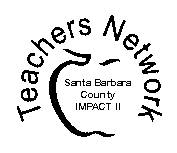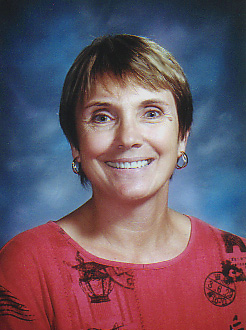The TeachNet Project sponsored with major funding by the AT&T Foundation,
seeks to improve student achievement by providing training, grants, networking and resource sharing to teachers at seven of the Teachers Network affiliates.


www.qad.com
Age of Exploration: A Class Timeline
Unit Overview
In this unit, the Internet and Microsoft Word are used to integrate language arts and social studies. Fifth grade students study the history of the United States and the age of exploration. They also develop research skills and write research papers. At my school, the students traditionally write an explorer report during the first part of the school year. The activities in this unit combine the explorer report and the study of the exploration of North America and teach computer skills. Students select an explorer who explored North America. They use the Internet to research the explorer, use an online timeline generator to create their own explorer timeline, and then work in groups to make posters that are displayed on a classroom timeline. The unit builds knowledge and understanding of the world during this period as the students research other events and discoveries in the areas of literature, art, music, science, politics and religion and create a document using a word processing program.
Assessment:
Students are evaluated on their participation in classroom discussions, their completed worksheets, timelines, and their group posters.
Standards:
United States History and Geography:
5.2 Students trace the routes of early explorers and describe the early explorations of the Americas.
· Describe the entrepreneurial characteristics of early explorers (e.g., Christopher Columbus, Francisco Vásquez de Coronado) and the technological developments that made sea exploration by latitude and longitude possible (e.g., compass, sextant, astrolabe, seaworthy ships, chronometers, gunpowder).
· Explain the aims, obstacles, and accomplishments of the explorers, sponsors, and leaders of key European expeditions and the reasons Europeans chose to explore and colonize the world (e.g., the Spanish Reconquista, the Protestant Reformation, the Counter Reformation).
· Trace the routes of the major land explorers of the United States, the distances traveled by explorers, and the Atlantic trade routes that linked Africa, the West Indies, the British colonies, and Europe.
Language Arts
· 2.0 Reading Comprehension (Focus on Informational Materials) Structural Features of Informational Materials
· Understand how text features (e.g., format, graphics, sequence, diagrams, illustrations, charts, maps) make information accessible and usable.
· 2.2 Analyze text that is organized in sequential or chronological order.
Writing
· Establish a topic, important ideas, or events in sequences or chronological order
· Create simple documents using electronic media and employing organizational features (e.g., passwords, entry and pull-down menus, word searches, the thesaurus, spell checks).
Software or Materials Used:
Computers for every student with access to the Internet are required. Microsoft Word or another word processing program is needed for lesson four. A printer to print the timelines, word processing documents and saved illustrations from the Internet is needed.
Keywords:
American History, Explorers
The Students
The students in my class are fifth graders and about two-thirds are English language learners. We have a computer lab at school of 34 fairly new computers. Most of the students had done some simple searches and research on the Internet and had used a word processing program for simple text only documents.
Overall Value
One of this unit's best features is that it combines required curriculum (social studies, language arts and technology) into one project. Students learn about the age of exploration, how to do research on the Internet and how to create timelines and illustrated word documents. My class enjoyed using the timeline generator. Students also enjoyed working in groups to create the posters.
Details
Subject Area: Social Studies
Second Area: Language Arts
Starting Grade Level: Fourth
Ending Grade Level: High School
Tips for the Teacher
The Internet research is the most difficult for the students, especially for English language learners. Be sure to model how to navigate the sites and discuss what information is relevant. The concept of a timeline is difficult for the students in fifth grade to grasp until they actually build their own and create a class timeline. Then the students understand this concrete representation of events. You may need to help the teams divide the tasks when they are building their posters.

Martha McIntyre
About the teacher: Martha McIntyre is a fifth grade teacher at Aliso Elementary School in Carpinteria, California. She has taught in the Carpinteria Unified School District for twenty-eight years, eleven as a special education teacher. Martha is a former a Santa Barbara County CTAP Technology Mentor. She has a master's degree in educational technology.